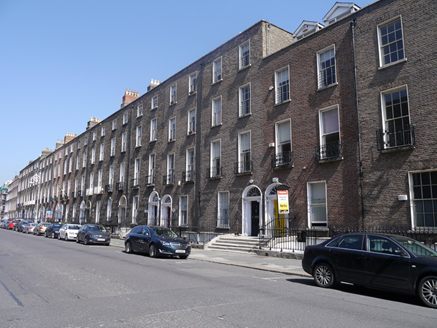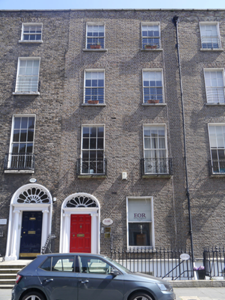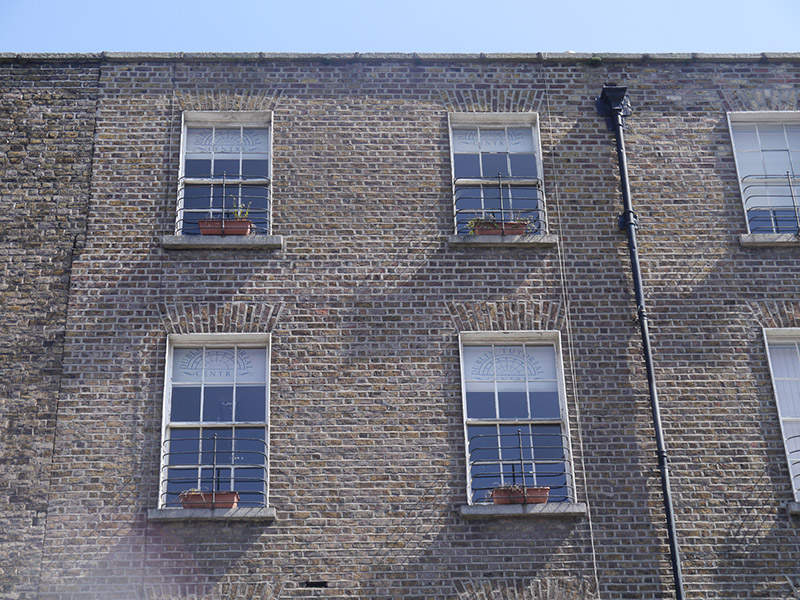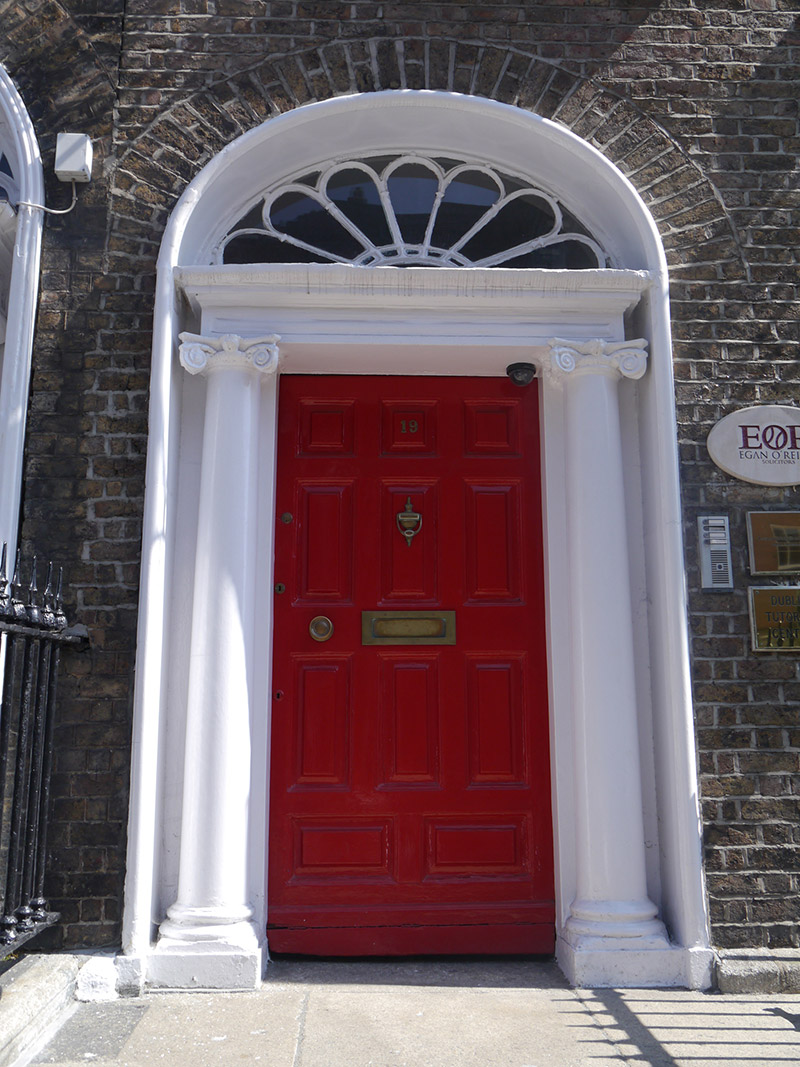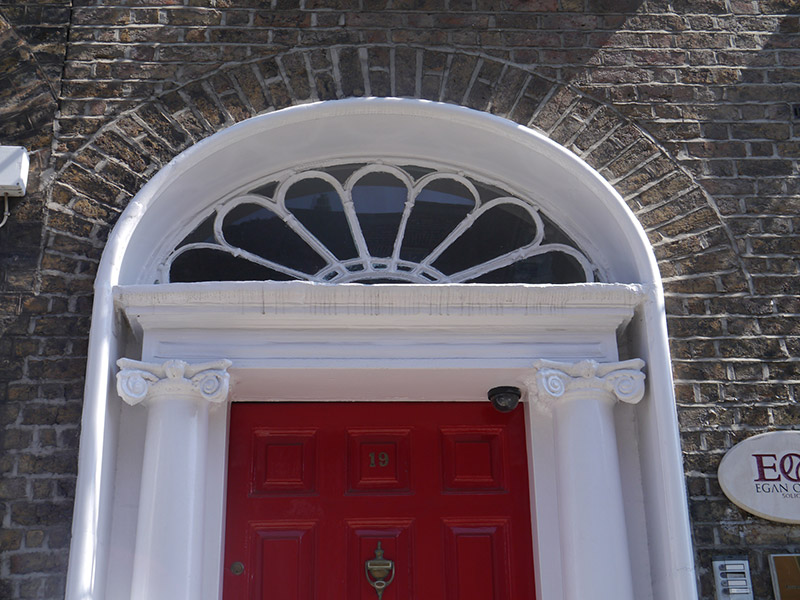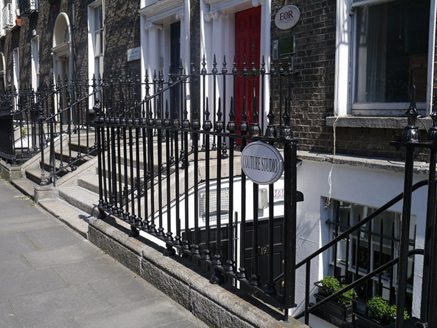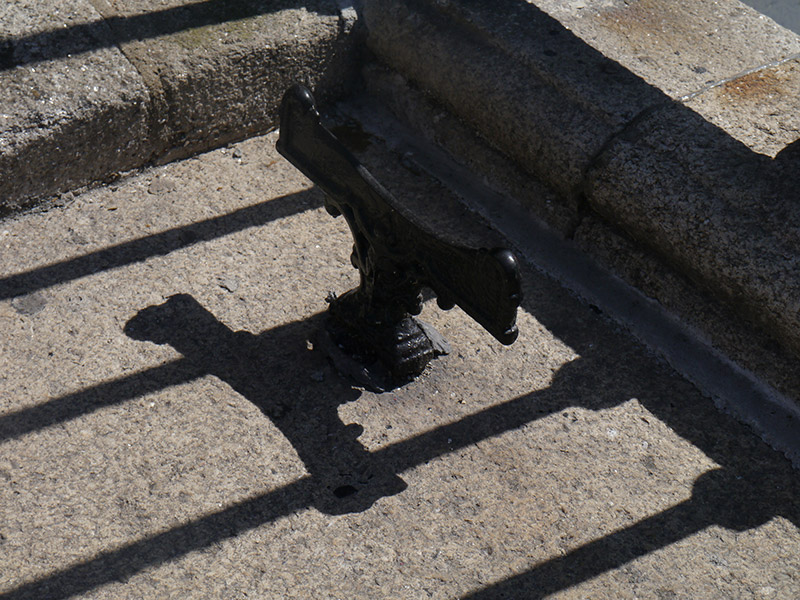Survey Data
Reg No
50100555
Rating
Regional
Categories of Special Interest
Architectural, Artistic
Original Use
House
In Use As
Office
Date
1815 - 1835
Coordinates
316924, 233331
Date Recorded
03/06/2016
Date Updated
--/--/--
Description
Attached two-bay four-storey former house over basement, built c. 1825 as one of pair with No. 20, having two-storey return to west end of rear. Now in commercial office use. M-profile pitched slate roof, hipped to west end of front span, behind parapet with granite coping and parapet gutters. Brick chimneystack to party wall. Shared cast-iron downpipe and hopper. Brown brick walling laid in Flemish bond on granite plinth course over painted ruled-and-lined rendered basement walling. Square-headed window openings, diminishing in height to upper floors, with masonry sills, patent reveals and brick voussoirs. Timber sliding sash windows with ogee horns, one-over-one pane to ground floor, four-over-four pane to basement and six-over-six pane elsewhere. Decorative cast-iron balconettes to first floor, wrought-iron window-guards to second and top floors, and wrought-iron grille to basement. Rear elevation has apparently mainly six-over-six pane timber sash windows. Elliptical-headed doorway with painted masonry doorcase having moulded surround, engaged columns with Scamozzian capitals supporting entablature with panelled frieze, and peacock's tail fanlight and replacement eleven-panel timber door with brass furniture. Granite entrance platform with cast-iron boot-scrape, accessed by five granite steps. Spear-headed cast-iron railings on moulded granite plinth enclosing basement area, with cast-iron gate. Mild-steel steps to basement and recent square-headed door and window beneath entrance platform. Recent two-storey apartment building to rear of plot of Nos. 19-21.
Appraisal
A late Georgian house which appears to have been built as part of a group of six, although Nos. 19-20 have an additional storey bringing them into line with the grander proportions of the terrace to the west. The front elevation exhibits well-balanced proportions and fenestration grading typical of the period, with the restrained façade enlivened by later cast-iron balconettes and a good doorcase with Scamozzian capitals and a cast-iron fanlight. The street was erected between 1790 and 1834, the variations in the streetscape are indicative of the piecemeal nature of construction, the north side being notably less grand than the south. This property contributes to the cohesive character of Mount Street Upper and to the wider historic core of south Dublin. The east end of the street is effectively terminated by St. Stephen's Church, creating an interesting centrepiece and terminating one of the key vistas of Georgian Dublin.
